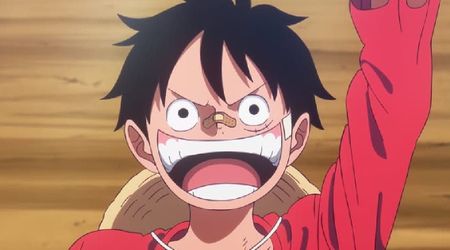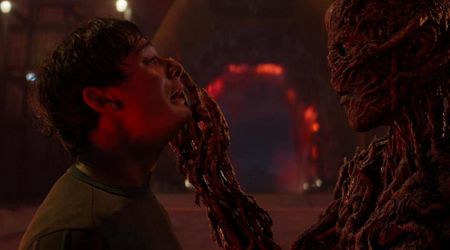With 'Teenage Mutant Ninja Turtles' #101 starting a new era, here's looking back at IDW's first 100 issues

The 'Teenage Mutant Ninja Turtles' franchise is going through some major changes.
Issue #101 will see the turtles pick up pieces of their lives after a war for the city of New York, and the sacrifice of their father, Master Splinter. They even have a new turtle on their team — the mutated ninja warrior, Jennika. Written and drawn by Sophie Campbell, the issue will be the first in a new era of TMNT comics that began in 2011. Before the new series releases, let's look back at the 100-issue run that brought us here.
Created by Kevin Eastman and Peter Laird in 1984, the 'Teenage Mutant Ninja Turtles' was first published by Mirage Comics in 1984, largely conceived as a 'Daredevil' parody. They proved popular enough to garner mainstream success, especially after the 1987 animated series and the vast amount of merchandise that was made available. The comic book adventures of the turtles continued in one form or another, bouncing from company to company.
In 2009, Nickelodeon purchased the rights to the 'Teenage Mutant Ninja Turtles' for $60 million, and the TV channel continues to produce animated series with the property today, currently producing 'Rise of the Teenage Mutant Ninja Turtles'.
More importantly, in 2001, they teamed up with IDW Publishing to produce a new comic book series. It would have Tom Waltz as the head writer and Bobby Curnow as editor. One of the big draws for the comic is that co-creator Kevin Eastman would also be involved. Kevin Eastman had sold his shares in the 'TMNT' franchise to Peter Laird in the 90s, and at that point hadn't had anything big to do with the turtles for over a decade.

In an interview with Patrick Ehiers (included as back-up material to the 'Teenage Mutant Ninja Turtles' issues leading up to #100), Kevin Eastman talks about what it was like coming back to the comic. "Red flags popped up, like the reincarnation angle, that scared me," Eastman said. "But they scared me in a really exciting way."
The reincarnation angle he refers to is a part of the rebooted comic, which retells the origins of the TMNT in a way that blends science and mysticism. The updated origin explains that the turtles are the reincarnated spirits of a family from feudal Japan. They are the four sons of a ninja warrior named Hamato Yoshi, who is reincarnated as Splinter, the rat. Hamato Yoshi was betrayed by his friend, Oroku Saki, the man who would go on to become the Shredder.
This new origin added a sense of myth and magic to what was a gritty, sci-fi series previously. The main success of the rebooted series, though, was its grounded focus on family.
In the interview with Ehiers, co-writer Tom Waltz spoke about the heart of the new series. "People will ask me what the secret to writing something like this is," he said, "and my answer is always, 'Have you ever been in a sword fight? Have you ever fought a criminal in an alley with nunchucks?' Most people will say no. And I’ll say, 'Do you ever argue with your brother? You ever have problems with your mom and dad?' That’s the most important part of the story."
The turtles' origins weren't the only things to receive an update. Iconic TMNT characters would receive their own updates, to better fit into the story. April O'Neil is the most notable example, being written as a scientist who worked in the lab that altered the turtles. She was written to be more intelligent and capable, instead of a damsel in distress. The comic also introduced new characters who have become an essential part of TMNT lore, such as Old Hob, Alopex, and Harold Lilja.

Comics are no stranger to expanded universes, but what set 'Teenage Mutant Ninja Turtles' apart was how tight its worldbuilding was. Most comic universes tend to grow more unwieldy the larger they grow, but the TMNT world was grown slowly, and with a definite plan in mind.
Micro-series were introduced — the first few focusing on each individual turtle, and then on other allies of theirs. In the second year, as new villains were introduced to the series, villain micro-series would cover their origins so as not to interrupt the pacing of the main book. There continued to be miniseries, but they were all limited runs that served the main story being told in 'Teenage Mutant Ninja Turtles', weaving together a larger story being told on both a street-level and on a cosmic scale.
The series went beyond just the turtles' fights against the Foot Clan, and brought them up against other mutants, scientific experiments, war with an interdimensional alien warlord, and even a pantheon of celestial beings. There were even two canon crossovers with the Ghostbusters — all fit neatly within the larger story being told.
One of the most notable miniseries that illustrated the depth and scale of the new mythos the series created was 'The Secret History of the Foot Clan'.
It's revealed that classic TMNT foe Krang and the Utrom Empire, as well as the Pantheon, have been setting their plans in motions for centuries. They all have their roles to play in the origins of Leonardo, Michelangelo, Donatello, and Raphael, in ways that continue to play out through the main series. The one spin-off series was titled 'Teenage Mutant Ninja Turtles Universe' and it etched out the series much in the way the micro-series did, only with a wider focus.
Issue #100 brought a lot of plot threads to a close, but it's not the end of the turtles' story by a long shot.

The reins have been handed over to Sophie Campbell, and thanks to the extraordinary work of the creators who've contributed to the TMNT universe, she has a rich, exciting legacy to be carrying forward. With new team members, and challenges both known and unknown ahead of them, here's hoping for another 100 issues of incredible storytelling.










